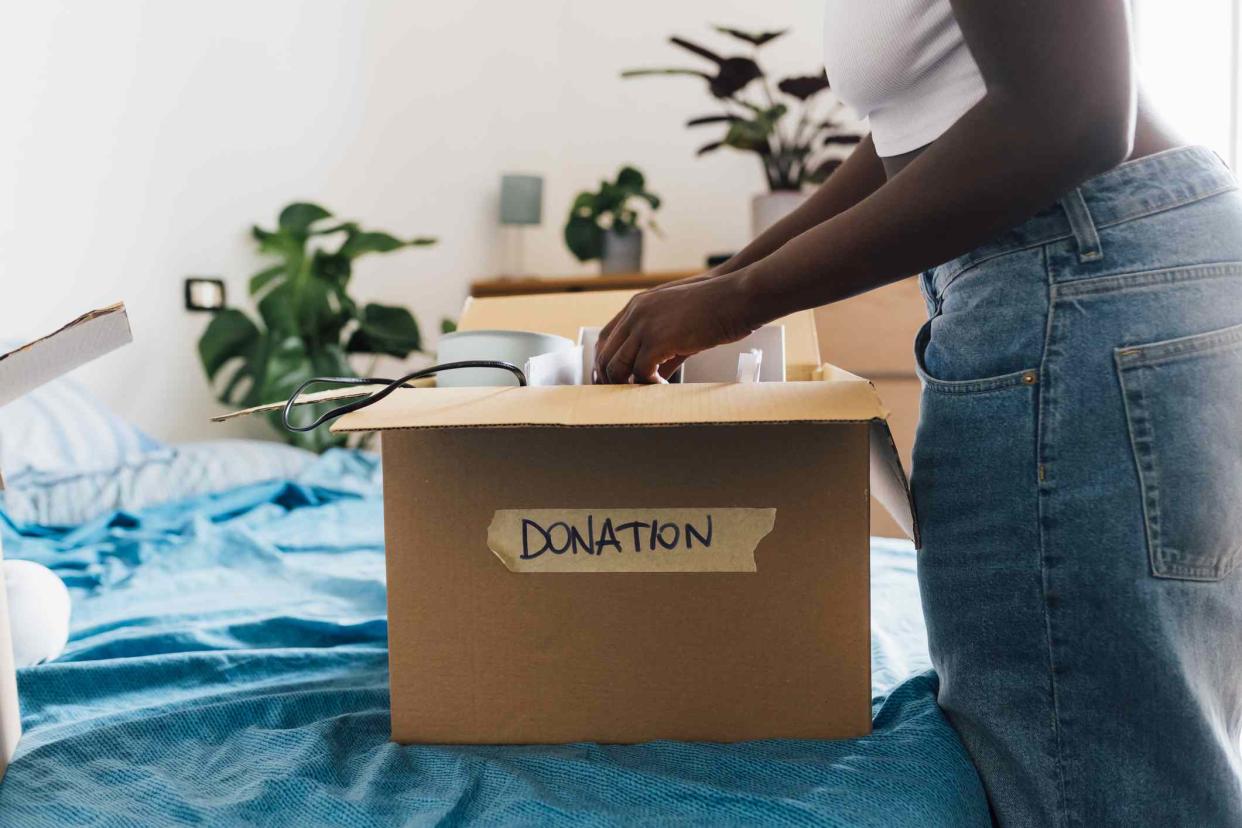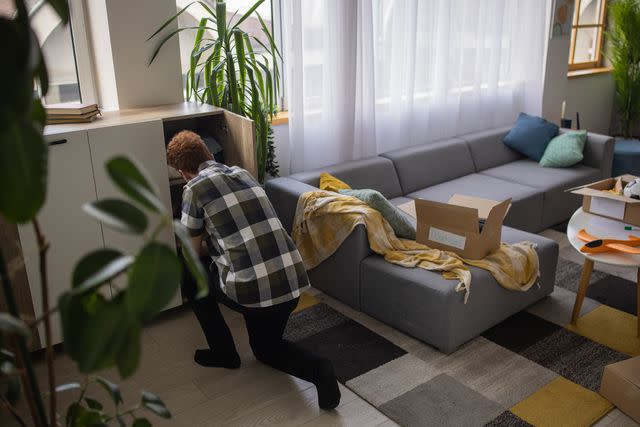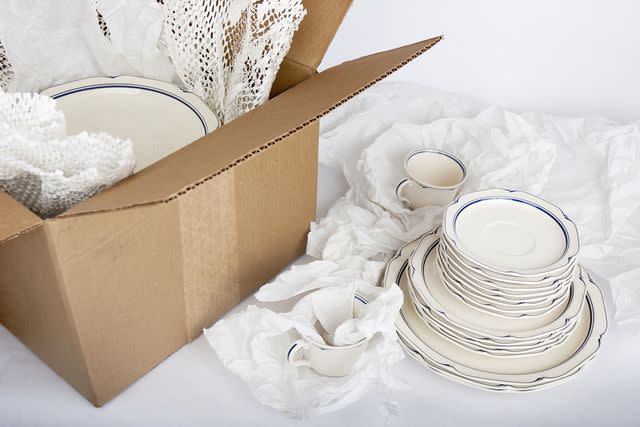The Ultimate Guide to Decluttering Before Moving, According to Experts

Getty Images / Westend61
Having to add one more task to the moving to-do list probably isn't your first choice. But, taking time to declutter before you move is a must-do—just take it from organizing expert Brenda Scott, owner of Tidy My Space.
"I tell my clients that decluttering before a move is crucial," she says. "Paying movers to pack, load, and unload items that you don't want or won't fit in the new space is a huge waste of time and money."
We've talked with the organizing, decluttering, and moving experts to give you their top tips for decluttering before moving. With their help, decluttering can be less stressful than you thought, and far more helpful than you realized.
Start ASAP

Getty Images / Susumu Yoshioka
Decluttering and organizing often takes way longer than expected, so get started on it as soon as you can. While it can be tempting to put it off for as long as possible, "rushing only adds unneeded stress and frustration," Scott says.
A harried decluttering can lead to an incomplete job, where too few (or too many) things are discarded or donated, while a slow and steady approach allows you to take your time with each closet, drawer, and cabinet without getting burned out.
Heather Aiello, the CEO & founder of The Organized You, recommends beginning decluttering well in advance of your move. And if you're selling your home for the move, start even earlier.
"Ideally, the decluttering process should start before your home even goes up for sale, since this will help you get your home in good shape for a showing," Nick Valentino, VP of market operations at moving company Bellhop, says.
Keep Your New Floorplan In Mind
Organizing and decluttering before you move will do little good if you don't at least consider what the needs of your new home are first.
"Visualize your new living space—consider the layout, storage options, and overall aesthetic," Aiello says.
This helps you decide what items will fit and be functional in the new environment, as your new home will probably have a different amount (and type) of storage space than your old one. Take notes on your new floor plan (or better yet, take a video) and let that lead your decluttering process.
"For example, when you know that your new home has only a single bedroom closet, you know you can only fit that many clothes into it," Scott says. "Sort and edit down the contents from your double walk-in closet to fit the new closet."
Consider Items' Condition

Getty Images / Miodrag Ignjatovic
Don't let your perpetually unfinished projects follow you to your home. As tempting as it may be to bring along those pants that just need a quick patch or the chair that's waiting for a new cushion, if you haven't gotten to it now, there's little reason to think you'll get to it in your new home.
"Only keep items that are in good or excellent condition," Scott says. "No to-do-it projects allowed."
Another thing to ditch while decluttering is linens that are in poor condition and are kept for just-in-case reasons. One raggedy towel may be great for spills, but four old towels are three too many. In summary, don't let household junk move with you.
Use the 20/20 Rule
Another way to declutter as much as possible before moving is by using the 20/20 rule. If you come across an item in your home that you're not using, and it takes less than 20 minutes and $20 to replace, get rid of it.
As tempting as it can be to keep that specialized cleaning tool that only gets brought out every other year, keeping an unused (or rarely used) item will only contribute to the clutter. This is especially important when you have more than one of something.
"Declutter all multiples, especially items that fall under the 20/20 rule," Scott says.
But you don't need to just toss these unused items. Instead, you can host a garage sale, sell items online, or donate gently used goods, says Aiello. It not only declutters your space but can also provide extra funds or support for others.
Think Carefully About Sentimental Items

Getty Images / SteveDF
Figuring out when to keep and when to get rid of sentimental items is one of the hardest parts of decluttering. When trying to decide what to do with a sentimental item, first see if you can put it to use by having it replace a similar item in your home.
Another way to ease the pain of decluttering sentimental items is to gift them to someone else, especially loved ones.
"Friends and family are a great way to get rid of keepsakes," Valentino says. "This way, you get your space cleared out and also get the peace of mind of knowing that your precious memories are going to a good home."
But before passing them on, Aiello recommends "taking photos of items you want to remember but may not necessarily keep," so that those items aren't lost to time.
Get a (Temporary) Storage Unit
If you'll have an in-between period during your moving-out and your moving-in, consider getting a storage unit to keep your things in. This is also helpful when you don't want to rush decluttering or unpacking, and keep your house bin-free as you pack and unpack.
"This will let you put little-used items in neatly labeled bins and move them by the carload when you have time," Valentino says. "You can also take your time unpacking and moving those items into your new home after you've settled in and figured out how much space you have to work with."
However, this step must be temporary. A long-term storage unit for all your extra stuff is the antithesis of decluttering, as it simply moves the mess and clutter until it's out of sight.
Read the original article on The Spruce.

